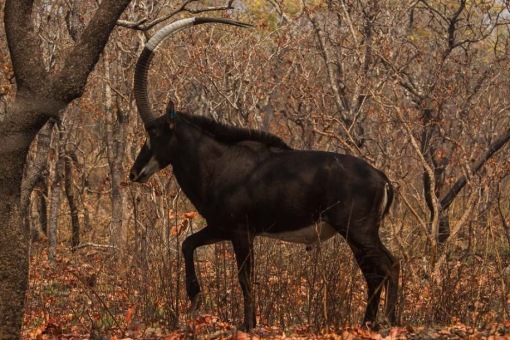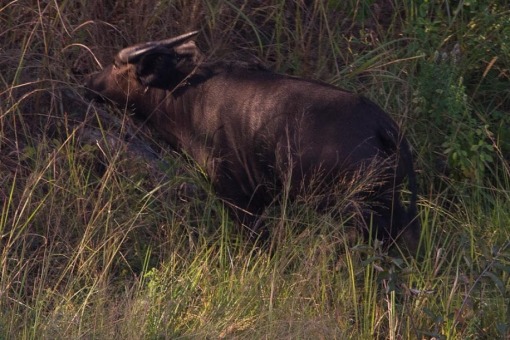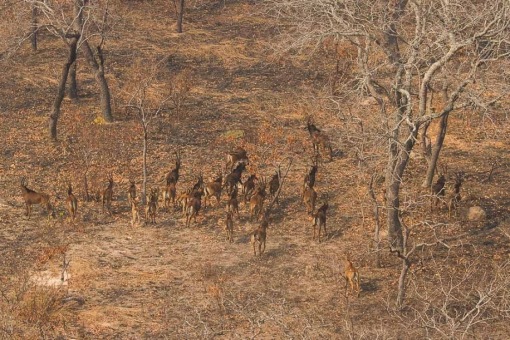Biologist Pedro Vaz Pinto’s Third Trimester 2016 Report with photos of Angola’s Cangandala Park and Luando Reserve, in English and Portuguese, now on our Giant Sable page.
Between July and August 2016 an ambitious aerial census and capture operation was carried out in Luando and Cangandala.

“The objective for the 2016 capture operation would be, over the course of three weeks, to make an updated sable population census in Luando Reserve and place up to 16 GPS collars and 5 VHF collars on giant sable, both in Cangandala and Luando. A complementing objective was to survey as many as possible of previously identified (from satellite imagery) sable hotspots in Luando, including water holes, critical anharas, while assessing and acting against poaching whenever justified.”
The Angolan military participated and provided critical support. In Luando Reserve the operation was a huge success. The three known herds were located and then the two “missing” groups were also found, bringing the total of confirmed herds up to five.

Ngola, “arguably the most powerfully built, strongest and well proportioned bull we ever handled”, was found escorting the largest herd in Luando.
In Cangandala National Park there was no need for counting the sable population as it is regularly well monitored on the ground. Also the poaching situation isn’t brilliant in Cangandala but at least it is fairly under control, besides the fact that with a couple exceptions all giant sables are contained inside the fenced sanctuary. Therefore the flights in Cangandala were done mainly with the purpose of capturing at least a couple young males and put them VHF collars.

A big surprise in Cangandala was coming across a young male forest buffalo which was clearly seen and photographed.
The slide show below shows evidence of snare-type poaching being carried out especially in the Luando Reserve.
“An important aspect of the operation involved some preventive anti-poaching measures, as a joint effort between our team, the Ministry of Environment, the local political Administrations and the Army from the Northern Military Region. An awareness campaign was carried out and the military made it clear that the giant sable antelope is a national symbol that deserves full protection and they are prepared to endorse the efforts and enforce the law if necessary. As result and over the period of a few weeks, it was possible for the local administration to collect dozens of shotguns that were being used for poaching inside the reserve.”

Visit our Giant Sable page to read Pedro Vaz Pinto’s full report with more photos, and previous reports. 2017 reports to be posted soon.


October 17, 2018 at 10:41 am
Is there any indication of lions during these researches in Angola.
October 19, 2018 at 3:11 am
Lions have been reported in Moxico province. There is also this older blog post you many find interesting https://angolafieldgroup.com/2013/09/27/giant-sable-2013-capture-operation-report/